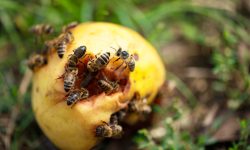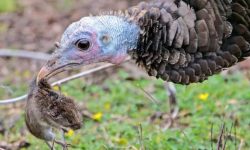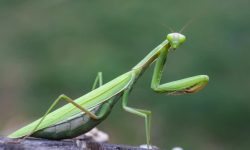Snakes have fascinated humans for centuries. From the tiny thread snake to the mighty anaconda, these reptiles are among nature’s most efficient predators. But beyond their mysterious behavior, one question often arises: What do snakes eat?
Snakes are carnivorous reptiles, meaning they feed exclusively on other animals. They don’t eat plants or fruits — instead, they rely on meat to survive and grow. Their diets vary depending on size, habitat, and hunting technique. Some snakes eat insects and amphibians, while others swallow mammals, birds, or even other snakes.
In this article, we’ll explore 20 foods snakes love the most, uncovering the fascinating details of their diet and feeding habits — from the tiniest garden snake to the largest constrictor.
Understanding the Snake Diet

Snakes Are True Carnivores
All snakes are strictly carnivorous, which means they eat only animal prey. Unlike many reptiles, snakes don’t have the digestive enzymes needed to process plants. Instead, they’ve evolved to swallow their prey whole, thanks to flexible jaws and expandable stomachs.
Their diet changes throughout life — small snakes feed on insects and small amphibians, while larger ones hunt mammals, birds, and reptiles. Each species has its preferred prey depending on its environment.
How Snakes Hunt and Eat
Snakes use different hunting techniques depending on their species. Constrictors like pythons and boas wrap around their prey and suffocate it, while venomous snakes like cobras and vipers inject venom that paralyzes or kills instantly.
Once captured, the snake swallows its meal whole, starting from the head. This process can take minutes to hours, depending on the size of the prey. Because digestion takes time, many snakes can go days or even weeks without eating after a large meal.
When and How Often Snakes Eat
The frequency of feeding depends on the species and prey size. Small snakes may eat every few days, while large constrictors might feed once every few weeks.
Snakes are opportunistic feeders, meaning they eat whenever food is available. They hunt mostly at night using heat-sensitive pits and chemical sensors to locate prey in the dark.
20 Foods Snakes Love the Most
1. Mice
Mice are the most common and balanced food source for countless snake species, both in the wild and captivity. Their small size, soft bones, and manageable fat content make them ideal for digestion, even in juvenile snakes. Ball pythons, corn snakes, and kingsnakes are especially known to thrive on a diet of mice.
In the wild, snakes often hunt mice in grasslands, farms, or near human settlements. The abundance of rodents provides a reliable food supply throughout the year. Snakes detect their prey through heat and scent, striking quickly before swallowing whole.
Mice offer a complete nutritional package — rich in protein, calcium, and fat. Regular feeding on mice supports muscle growth, energy storage, and reproductive health, making them one of the best staple foods for most snake species.
2. Rats
Rats are a preferred meal for larger snakes that require more substantial prey. Species like pythons, boas, and king snakes regularly hunt rats in forests, fields, and even urban environments. Their larger size offers more meat and nutrients per meal compared to mice.
Wild snakes target young or adult rats depending on their own size. Their flexible jaws and strong digestive enzymes allow them to handle prey nearly as wide as their bodies. In captivity, snakes are often fed pre-killed or frozen-thawed rats to ensure safety and prevent injury.
Rats are highly nutritious, containing high levels of protein, calcium, and iron. This makes them an excellent source of long-lasting energy, helping snakes maintain strength, especially during molting and breeding seasons.
3. Birds
Many arboreal (tree-dwelling) snakes naturally prey on birds and their chicks. Species such as green tree pythons and vine snakes rely heavily on their camouflage and patience to ambush unsuspecting prey among the branches.
Snakes strike quickly as birds perch or return to their nests. They may also consume hatchlings and eggs in a single sitting. Feathers, bones, and muscle tissue provide valuable proteins, while the fat reserves of birds offer energy-dense nutrition.
This feeding behavior helps maintain ecological balance by controlling small bird populations. It also highlights the snake’s adaptability — capable of hunting both on the ground and high in the canopy.
4. Eggs
Eggs are one of the easiest and most energy-efficient foods for snakes. The African egg-eating snake (Dasypeltis spp.) is a fascinating example, feeding exclusively on bird eggs. Its flexible jaw and specialized neck spines allow it to crush eggs internally and consume the contents without breaking the shell externally.
For snakes living near nesting grounds, eggs are an effortless and nutritious source of protein and hydration. They contain all the essential amino acids a growing snake needs.
This dietary adaptation allows egg-eating species to thrive in environments where live prey might be harder to find. It’s one of nature’s most efficient feeding strategies.
5. Frogs
Frogs are a favorite food for many snakes that live near rivers, ponds, and rainforests. Their moist, soft bodies are easy to digest, and they’re abundant during rainy seasons.
Species like garter snakes, water snakes, and keelbacks actively hunt frogs in shallow waters or near vegetation. Snakes rely on swift strikes and powerful jaws to prevent the slippery prey from escaping.
Frogs provide hydration, minerals, and protein — a perfect diet for snakes in humid environments. This food source also connects snakes to the amphibian food chain, helping balance aquatic ecosystems.
6. Toads
Toads are similar to frogs but are often more toxic and less active, making them suitable only for certain snake species. Snakes like hognose and keelback snakes have evolved resistance to toad venom and specialize in eating them.
Toads release toxic secretions from their skin as a defense mechanism, but resistant snakes are immune to these chemicals. They swallow toads whole, neutralizing any remaining toxins during digestion.
Toads offer protein, hydration, and trace minerals. In dry regions or during droughts, they become a vital source of moisture for snakes living far from constant water supplies.
7. Lizards
Lizards are among the most common prey for snakes worldwide, especially for smaller or juvenile species. They are abundant, easy to find, and provide a lean source of protein with minimal fat.
Snakes such as coral snakes, racers, and vine snakes specialize in catching geckos, skinks, and small iguanas. They use stealth and quick strikes to catch fast-moving reptiles on rocks, trees, or underbrush.
This diet supports fast metabolism and growth in young snakes, particularly in hot, dry environments where lizards are plentiful and active year-round.
8. Other Snakes
Some snakes are ophiophagous, meaning they eat other snakes. The king snake and king cobra are famous examples — they prey on venomous and non-venomous snakes alike.
This predatory behavior helps eliminate competition and provides a concentrated source of protein and fat. The long, slender body of a snake makes it easy to swallow and digest.
In the wild, this cannibalistic behavior helps maintain natural balance among snake populations, ensuring only the strongest survive.
9. Fish
Fish form a significant part of the diet for aquatic and semi-aquatic snakes like anacondas, water snakes, and sea kraits. These snakes hunt in rivers, lakes, and coastal areas.
They rely on quick underwater strikes, sharp teeth, and excellent swimming skills to catch slippery fish. Some species can even detect the vibrations fish make while moving.
Fish provide rich fats, omega-3 fatty acids, and hydration, keeping snakes healthy and agile. This diet is particularly common in tropical and river ecosystems where fish are abundant.
10. Insects
For small snakes and hatchlings, insects are an important starter food. They provide easy access to protein and are found in nearly every environment.
Crickets, beetles, grasshoppers, and caterpillars are often eaten by juvenile snakes before they can handle larger prey. Their exoskeletons also supply trace minerals and fiber that aid digestion.
As snakes mature, they transition from insects to larger prey, but these early meals play a crucial role in survival and early development.
11. Worms
Earthworms are a soft and highly digestible food source, especially for small or burrowing snakes. Their moist, protein-rich bodies are ideal for young snakes still learning to hunt.
Snakes like blind snakes and thread snakes feed almost exclusively on worms and larvae, often underground or under leaf litter.
Worms provide hydration and minerals, sustaining snakes in damp environments or during rainy seasons when other prey hides away.
12. Fish Eggs
Some aquatic snakes supplement their diet with fish eggs, which are easy to find during spawning season. The eggs are typically found in clusters on rocks, plants, or shallow waters.
Though small, fish eggs are rich in protein, vitamins, and essential fatty acids. Snakes consume large quantities to meet their energy needs.
This food source is seasonal but abundant, allowing snakes to feed efficiently with minimal effort.
13. Bats
Tree-dwelling and cave-dwelling snakes in tropical regions sometimes prey on bats. Tree boas and vine snakes are skilled at ambushing bats mid-flight or as they hang from ceilings.
These snakes position themselves near cave entrances and strike precisely as bats exit at dusk. Their excellent timing and flexibility make them effective aerial hunters.
Bats are high in protein and fat, helping snakes store energy during dry or food-scarce periods.
14. Small Mammals
Beyond rodents, many snakes feed on small mammals like rabbits, shrews, and moles. These provide dense nutrition and are a core diet for large constrictors such as boas and pythons.
Snakes use constriction to suffocate these animals before swallowing them whole. The bones, fur, and organs supply calcium, iron, and vital nutrients.
These mammals are energy-rich meals that allow snakes to go weeks without feeding again.
15. Squirrels
Squirrels are common prey for snakes in forested and tropical environments. Agile tree-climbing snakes like cobras and pythons ambush squirrels from branches or burrows.
Squirrels’ muscular bodies are rich in lean protein and fat, helping snakes maintain energy for hunting and reproduction.
The blood and internal fluids from the prey also provide hydration, which is crucial for snakes in hot climates.
16. Small Reptiles
In regions with high reptile diversity, snakes often feed on small reptiles like hatchling turtles or young iguanas.
These prey provide calcium, keratin, and trace minerals that support healthy scale and bone development.
This behavior highlights the snake’s versatility and its ability to hunt in both aquatic and terrestrial habitats.
17. Birds of Prey (Rarely)
Large constrictors, such as reticulated pythons, have occasionally been observed consuming small hawks, owls, or falcons.
These predation events are rare and typically occur when the snake ambushes a bird of prey resting or roosting.
Though difficult to capture, birds of prey provide exceptional nourishment and demonstrate the snake’s ability to dominate even formidable targets.
18. Rodents in Burrows
Many snakes, especially rat snakes and cobras, specialize in invading rodent burrows to find food.
They use their slender, flexible bodies to enter tunnels and strike quickly before the prey can escape. Burrow raids often yield multiple meals, including young rodents and eggs.
This hunting method allows snakes to access hidden food sources with minimal exposure to predators.
19. Amphibian Larvae (Tadpoles)
Tadpoles are soft, abundant, and full of nutrients — a perfect meal for young or aquatic snakes.
These small amphibians provide hydration and protein, crucial for snakes during early growth or seasonal changes.
Feeding on tadpoles helps maintain the balance of amphibian populations in wetland ecosystems.
20. Carrion (Dead Animals)
Although snakes are primarily hunters, some will eat carrion (dead animals) when live prey is unavailable.
Scavenging usually occurs during droughts or after natural disasters when food is scarce. Large snakes like pythons may feed on recently deceased mammals or fish.
While carrion is not ideal, it offers survival sustenance, allowing snakes to endure until hunting conditions improve.
Frequently Asked Questions (FAQs)
Do snakes eat plants?
No. Snakes are strictly carnivorous and lack the digestive system to process plants or vegetables.
How often do snakes eat?
Small snakes may eat once or twice a week, while large pythons or boas can go weeks between meals after consuming large prey.
Do snakes chew their food?
No. Snakes swallow their prey whole, using flexible jaws that expand to fit large meals.
Do snakes drink water?
Yes, snakes drink water by lapping it with their tongue or absorbing droplets from their surroundings.
Do all snakes eat live prey?
Most snakes prefer live prey, but in captivity, many are trained to eat pre-killed or frozen-thawed animals safely.
Conclusion
Snakes are remarkable carnivores, perfectly adapted to a wide range of diets and habitats. From insects and amphibians to birds and mammals, their feeding behavior showcases nature’s creativity and balance.
Their role as predators keeps ecosystems healthy by controlling pest populations and maintaining biodiversity. Whether in jungles, deserts, or rivers, snakes prove that survival often depends on precision, patience, and adaptability.
So the next time you see a snake gliding silently through the grass or water, remember — it’s not just exploring. It’s hunting, thriving, and continuing a 100-million-year-old story of evolution and instinct.






